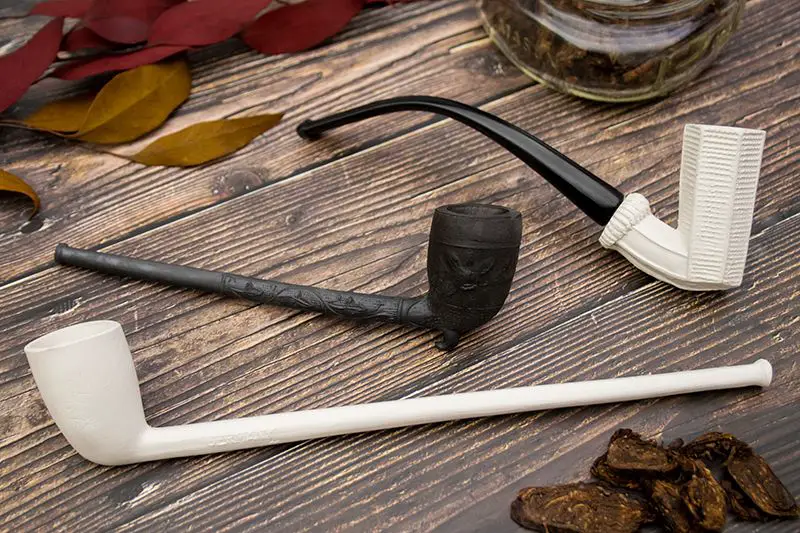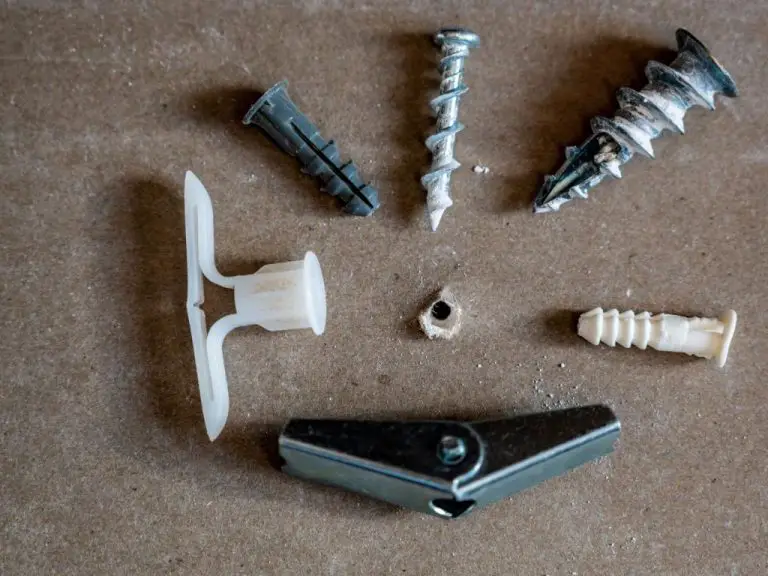When Did They Stop Making Clay Pipes?
Clay tobacco pipes have a long history dating back to at least the 16th century. They originated in England shortly after the introduction of tobacco from North America and became extremely popular smoking devices, especially in Europe, during the 17th and 18th centuries.
The earliest clay pipes were produced in England around 1558, likely as an alternative to wooden pipes that were common at the time (https://pipedia.org/wiki/A_Short_History_Of_Clay_Pipes). Pipe making grew into a major industry and spread across Europe. By the 17th century, clay tobacco pipes were ubiquitous, affordable, and disposable items that were smoked by people of all classes.
Clay pipes became the most common way people consumed tobacco until the 19th century. Their heyday stretched from around 1600-1800. Mass production enabled the widespread adoption of clay pipes during this era. At their peak popularity, clay pipe makers were producing tens of millions of pipes per year to meet demand (https://www.smokingpipes.com/smokingpipesblog/single.cfm/post/the-history-manufacture-and-use-clay-pipes).
The Height of Clay Pipe Popularity
Clay pipes were extremely popular in England and other European countries during the 17th and 18th centuries. They were the most common way for people to consume tobacco during this time period. According to A Short History Of Clay Pipes, by 1680-1700, when the industry reached a peak, almost every town and city in England had pipe makers producing millions of clay pipes.
Clay pipe making in England appears to have begun in the late 16th century. Production grew rapidly as tobacco consumption increased. Pipe making centers emerged in regions such as Devon, Bristol, London and York. Exports of English clay pipes were also significant, with large quantities shipped to British colonies in America and elsewhere. Dutch pipe production also expanded during the 17th century to support booming tobacco consumption, especially in Amsterdam.
Use of clay pipes for smoking remained extremely common through the 18th century in Europe. An estimated 25 million clay pipes were being produced in London alone in the early 1700s, according to Clay Tobacco Pipes. The peak popularity of clay pipes came right before other materials like briar and meerschaum began replacing them in the late 18th and early 19th centuries.
The Decline of Clay Pipes
Clay pipes were the dominant form of tobacco pipe in Europe and North America in the 17th and 18th centuries. However, their popularity began declining in the early 19th century for several reasons.
One major factor was the introduction of alternative materials for making tobacco pipes. By the early 1800s, pipes made of briar wood, meerschaum, and other materials started becoming more popular and widely available. Briar pipes in particular were seen as superior for their heat resistance and neutral taste that did not affect the tobacco flavor (A Short History Of Clay Pipes).
Another reason was growing public health concerns over the use of clay pipes. The porous nature of fired clay meant pipes absorbed moisture and residues from the tobacco over time. This made them harder to clean thoroughly. As awareness increased about hygiene and the spread of disease, people viewed clay pipes as less sanitary.
There were also concerns that the short stem lengths of clay pipes led to more direct contact with tobacco smoke andits negative health effects. Longer stems, as found on briar pipes, allowed the smoke to cool more before inhalation. Socioeconomic changes in the Victorian era led to more leisure time and new etiquette norms that favored longer, cleaner pipes (The History, Manufacture, and Use of Clay Pipes).
As a result of these factors, clay declined as the pipe material of choice by the mid to late 1800s, replaced largely by briar and meerschaum pipes.
Tobacco Pipe Making Shifts Away from Clay

Clay tobacco pipes were the most common type of tobacco pipe in Europe and North America throughout the 17th and 18th centuries. However, by the mid-1800s, pipe making began shifting away from using clay as the primary material.
According to Wikipedia, briar wood started becoming a more popular pipe material in the 19th century. Briar wood was appreciated for its heat resistance and ability to absorb moisture. Briar pipes were first manufactured on a large scale in Saint-Claude, France beginning in the 1860s.
Another alternative material that grew in popularity was meerschaum. Meerschaum is a soft white mineral that is easy to carve and shape. This source notes that meerschaum pipes first became fashionable in Europe in the 1700s, though they did not become commonplace until the late 1800s. The porous nature of meerschaum allowed for a cool, dry smoke.
So while clay tobacco pipes dominated for centuries, improvements in briar and meerschaum pipe manufacturing led to these materials surpassing clay in popularity by the late 19th and early 20th centuries.
Advances in Manufacturing
New machines and methods in the late 19th and early 20th centuries enabled mass production of pipes in materials like plastic, concrete, and steel, leading to the decline of clay as the material of choice for pipe manufacturing.
Technological innovations like the Mannesmann process allowed for cheaper and higher volume production of seamless steel pipes. This process, patented in 1885, used rolling mills and reforming technology to shape steel into hollow pipe forms without seams (Source). The availability of seamless steel pipes enabled their widespread use in industries like oil and gas, contributing to the shift away from traditional clay pipes.
New extrusion and molding processes also enabled continuous production of pipes using materials like PVC and other plastics. Plastics could be made into pipes in long sections rather than short lengths. Plastics were also cheaper, lighter, and easier to work with than traditional clay. These manufacturing innovations allowed plastic pipes to overtake clay pipes in many applications by the mid 20th century.
Advances in concrete pipe production like the use of steel reinforcement also improved strength and durability. New spinning techniques allowed concrete pipes to be produced in a range of diameters quickly and efficiently. The development of concrete and plastic pipes and associated manufacturing processes was a key factor in the decline of clay pipe usage over time.
Clay Pipe Use Today
While clay pipes are no longer as ubiquitous as they once were centuries ago, they continue to have some specialized uses today. The most common modern application of clay pipes is in sewer and drainage systems. Modern vitrified clay pipes are fired at extremely high temperatures, creating a ceramic-like material that is durable and resistant to corrosion from sewage. These pipes have a long lifespan compared to plastic or concrete alternatives.
For smoking tobacco, clay pipes have largely been replaced by briar and other materials. However, a niche community of pipe smokers continues to use and collect traditional clay pipes. These pipes are valued for providing a pure, unadulterated smoking experience. While not suitable for everyday smoking like briar, clay pipes allow tasting the natural flavors of tobacco. Handmade clay pipes are still produced today by some artisan pipe makers seeking to preserve the old tradition of clay pipe smoking.
Additionally, clay pipes occasionally find use in theater, historical reenactments, costumes, and decor. Authentic clay pipes lend an air of historical immersion. However, for actual smoking, many pipe smokers view clay as more novelty than practical piping material compared to modern options. Still, clay pipes possess unique qualities that ensure their limited ongoing use despite fading from mainstream popularity long ago.
Collecting Antique Clay Pipes
Clay pipe collecting has emerged as a popular hobby among history enthusiasts. Antique clay pipes provide a tangible connection to the past and offer insight into the lifestyle and customs of previous eras. While fragile, clay pipes are durable artifacts that have survived hundreds of years when properly cared for.
Clay pipes were inexpensive, disposable items during their heyday in the 17th-19th centuries, so intact specimens can be rare. Dedicated collectors have amassed large collections of pipes from around the world. The Clay Pipe Collectors Circle International formed in 1983 to advance the study and preservation of clay tobacco pipes.
The hobby attracts collectors interested in pipes as historical artifacts or as works of art and craftsmanship. Styles and motifs changed over time, reflecting popular trends and innovations in manufacturing. Pipes can provide clues about the people who smoked them centuries ago.
Careful collection, documentation, and storage helps preserve antique clay pipes for future generations. As with any hobby, responsible collecting maintains historical integrity and context.
Notable Clay Pipe Makers
Clay tobacco pipes have been made for centuries by various companies and artisans. In the 17th and 18th centuries, pipe making was a major industry in Britain and America. Some of the most famous historical clay pipe brands and makers include:
Peterson – Founded in 1865 in Dublin, Ireland, Peterson pioneered the first system pipes and became one of the most recognized brands for high-quality briar tobacco pipes. They also produced some clay pipes early on.
Gouda pipes – The city of Gouda in the Netherlands was a major producer of clay pipes in the 17th and 18th centuries, exporting pipes throughout Europe and to colonies worldwide. The Gouda clay pipes became known for their intricate decorations and long stems.
Gambier’s Clay Pipe Factory – Operating in London in the early 19th century, Gambier produced over 150,000 pipes per week at their peak. They helped popularize shorter pipe stems.
W. White of Glasgow, Scotland was one of the most famous clay pipe makers of the late 19th and early 20th centuries, known for trademark thistle decorations.
In America, some early prominent clay pipe producers included David Knox of New York and Thomas Commeraw of Philadelphia. Their pipes were smoked by early American settlers and presidents.
Decline of Clay Pipe Making
The decline of clay pipe making began in the late 19th century as pipes transitioned from clay to briar and other materials. According to Pipedia.org, one of the last major clay pipe makers was William White & Co, which operated out of Glasgow, Scotland from the early 1800s to 1955 when they stopped making clay pipes (Pipedia). Another famous British pipe maker, McDougall’s, was founded in Glasgow in 1846 but shuttered its clay pipe business in the 1960s (Ironbridge).
In the United States, clay pipes remained popular through the 1800s. But by the early 1900s, many major American pipe makers had transitioned to briar as the primary material. Missouri Meerschaum Company, established in 1869, was once the world’s largest producer of clay pipes but today focuses exclusively on corncob pipes.
While large factories phased out clay pipe production over the 20th century, some smaller operations continued filling niche demand. But major industrial production largely ceased by the 1960s in favor of briar and other modern materials.
Conclusion
In summary, clay pipes were extremely popular smoking implements from the 16th to 19th centuries, with the height of their popularity in the 17th and 18th centuries. As the primary means of tobacco smoking during this time, clay pipe manufacturing became an established trade in Europe and colonial America.
However, clay pipes began to decline in the late 18th and 19th centuries for several reasons. The growth of alternative materials like briar wood and meerschaum provided smokers with more options. Manufacturing innovations also allowed more mass production of pipes using materials like vulcanite and celluloid. Though some regions like the Netherlands maintained a clay pipe culture longer, their use faded in most places by the early 20th century.
Today, intact antique clay pipes are sought after by collectors and archaeologists. The patterns and designs on these pipes help date and identify where they originated. Though no longer a common smoking implement, the history of clay tobacco pipes provides an insightful window into the evolution of popular culture over the past four centuries.


